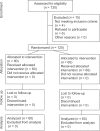The effect of nitrous oxide in comparison to oxygen combined with fentanyl on the hospitalization time and pain reduction in renal colic patients at emergency department
- PMID: 29531570
- PMCID: PMC5842448
- DOI: 10.4103/jrms.JRMS_473_17
The effect of nitrous oxide in comparison to oxygen combined with fentanyl on the hospitalization time and pain reduction in renal colic patients at emergency department
Abstract
Background: Renal colic is a painful medical emergency, needs urgent intervention to reduce pain. Nonsteroidal anti-inflammatory drugs, opioids, and entonox are pain-relieving agents. This study was aimed to compare fentanyl + entonox (nitrous oxide + O2) versus fentanyl + oxygen.
Materials and methods: One hundred and twenty patients with acute renal colic presenting to the emergency department were enrolled. First, 50 μg fentanyl was infused for all patients. Then, patients divided into two groups receiving masks of entonox and oxygen, respectively. Quantitative measurement of pain was performed by visual analog scale, before the intervention, after 3, 5, 10, and 30 min of that. If the pain was not relieved after 30 min, 50 μg fentanyl was infused. If the pain was still continued, ketorolac and ketamine were used. Hospitalization duration and severity of pain at specified times were compared between patients in two groups.
Results: The mean (standard deviation) time of hospitalization was 211 (59) and 236 (61) min in fentanyl + entonox and fentanyl + O2 groups, respectively (P = 0.024). The decrease in pain severity after 10 and 30 min in fentanyl + entonox group were significantly greater than fentanyl + O2 group (P = 0.002 and 0.001, respectively). Mean (standard error) of needed time for renal colic pain to get better was 11.27 (1.23) and 20.47 (1.71) min in fentanyl + entonox and fentanyl + O2 groups, respectively (P < 0.001). Proportion of patients relief from pain in fentanyl + entonox in the second, third, and fourth measurements were significantly more than fentanyl + O2 group (P = 0.036, P < 0.001, and P < 0.001, respectively).
Conclusion: Entonox is more effective to decrease the duration of hospitalization and reduction of pain than O2 in renal colic patients.
Keywords: Fentanyl; nitrous oxide; oxygen; renal colic.
Conflict of interest statement
There are no conflicts of interest.
Figures
Similar articles
-
Analgesic Effects of Inhalation of Nitric Oxide (Entonox) and Parenteral Morphine Sulfate in Patients with Renal Colic; A Randomized Clinical Trial.Bull Emerg Trauma. 2015 Apr;3(2):46-52. Bull Emerg Trauma. 2015. PMID: 27162902 Free PMC article.
-
Comparison of efficacy nebulized fentanyl with intravenous ketorolac for renal colic in patients over 12 years old.Am J Emerg Med. 2021 Jun;44:358-361. doi: 10.1016/j.ajem.2020.04.053. Epub 2020 Apr 21. Am J Emerg Med. 2021. PMID: 32345561
-
Randomized clinical trial of Entonox versus midazolam-fentanyl sedation for colonoscopy.Br J Surg. 2009 Apr;96(4):361-8. doi: 10.1002/bjs.6467. Br J Surg. 2009. PMID: 19283736 Clinical Trial.
-
A Systematic Review and Meta-analysis Comparing the Efficacy of Nonsteroidal Anti-inflammatory Drugs, Opioids, and Paracetamol in the Treatment of Acute Renal Colic.Eur Urol. 2018 Apr;73(4):583-595. doi: 10.1016/j.eururo.2017.11.001. Epub 2017 Nov 22. Eur Urol. 2018. PMID: 29174580
-
Intravenous Acetaminophen for Renal Colic in the Emergency Department: Where Do We Stand?Am J Ther. 2017 Jan/Feb;24(1):e12-e19. doi: 10.1097/MJT.0000000000000526. Am J Ther. 2017. PMID: 27779484 Review.
References
-
- Shokeir AA, Abdulmaaboud M. Prospective comparison of nonenhanced helical computerized tomography and doppler ultrasonography for the diagnosis of renal colic. J Urol. 2001;165:1082–4. - PubMed
LinkOut - more resources
Full Text Sources
Other Literature Sources




